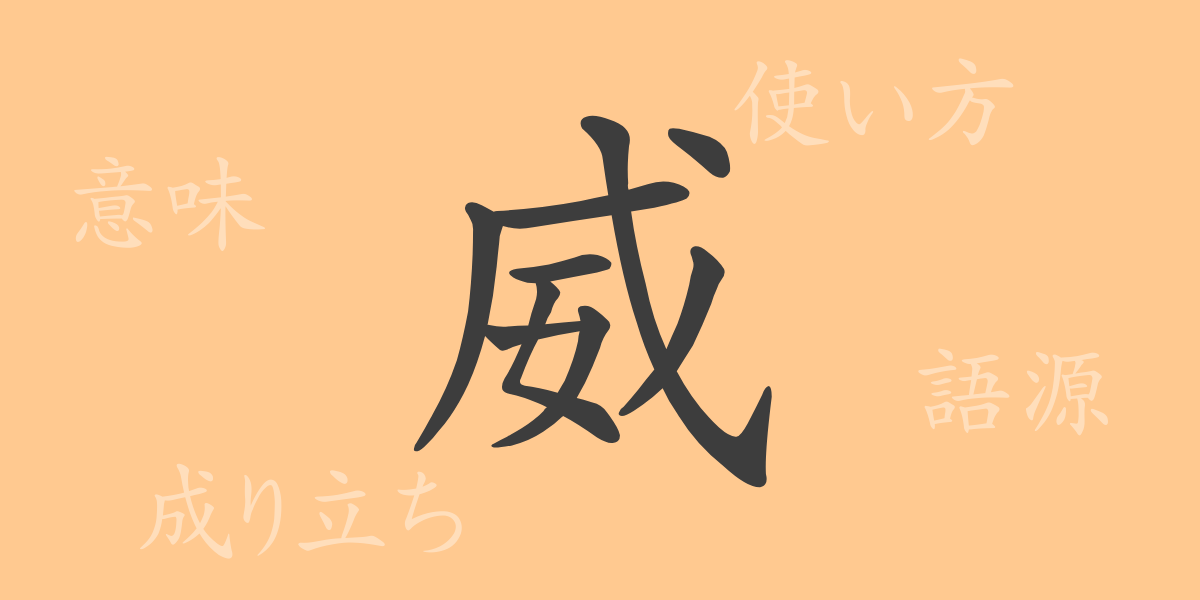“
In the realm of Japanese culture, kanji transcend mere characters, often carrying potent messages within their forms. This article focuses on the kanji ‘威’ (I), exploring its allure and force. We will examine how ‘威’ was formed, its meanings, usages, and how it integrates into our language, enriching the Japanese linguistic tapestry.
Origins of 威 (I)
The kanji ‘威’ originated in ancient China, developing from pictographs that initially depicted a mythical giant beast. Its formidable appearance led it to symbolize power and strength. Over time, ‘威’ came to represent human concepts such as ‘dignity’ and ‘authority,’ maintaining these meanings to the present day.
Meaning and Usage of 威
‘威’ is used in various terms that denote force or influence, such as ‘authority’ (権威), ‘intimidation’ (威圧), and ‘majesty’ (威光). It often describes the inherent power of a person or object or the strong impression that instills awe in others. The phrase ‘威風堂々’ (with grandeur and dignity) also utilizes ‘威’ to depict a majestic and imposing demeanor.
Readings, Stroke Count, and Radical of 威
The kanji ‘威’ is beloved for its form and the depth of its meanings.
- Readings: On’yomi (Sino-Japanese reading) ‘I’, no specific Kun’yomi (native Japanese readings)
- Stroke Count: 9 strokes
- Radical: 女部
Phrases, Idioms, and Proverbs Involving 威
There are numerous idioms and proverbs containing ‘威’, each illustrating the richness of Japanese expressions. For example, ‘威風堂々’ (impressively dignified) portrays someone with a commanding presence, while ‘威を借る狐’ (a fox borrowing power) refers to someone who flaunts authority not their own. These phrases are effectively used in daily conversation and literature.
Summary of 威
The kanji ‘威’, with its significant presence and profound meanings, occupies a special place in Japanese language. Symbolizing power and authority, ‘威’ leaves a lasting impression through words. In everyday language use, including idioms and proverbs, ‘威’ offers a myriad of expressive possibilities, unlocking the full potential of language to convey compelling messages.
“

























